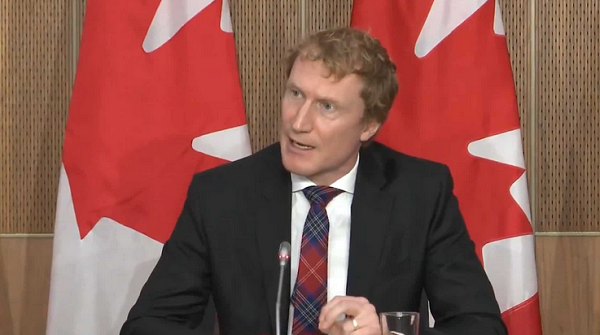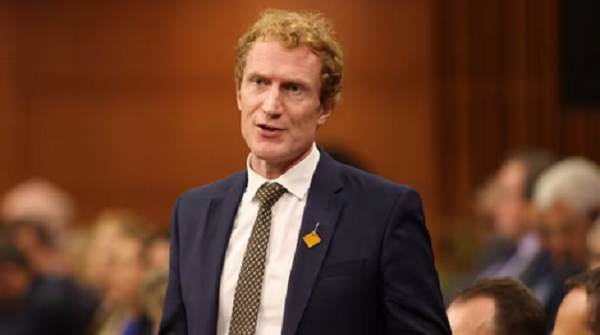What measures can Ottawa take to reduce the skyrocketing refugee claims?
Canada’s refugee system has been the envy of the world. It’s recognized as being orderly, fair and efficient when compared to any other western country.
But as the number of asylum seekers keeps surging here — and with the queue and processing times getting longer, the beleaguered system is in desperate need of a rethink to save it from spiraling out of control and being clogged up in endless backlogs.
“It didn’t take long for me to realize with the team that we needed to maintain our ability to render fair decisions despite the growing intake,” Manon Brassard, who was appointed as the chair of the Immigration and Refugee Board a year ago, told a Senate committee in June. “We need to do something about that.”
In 2023, the country’s largest independent tribunal received 138,000 new claims, up by 129 per cent from the year before and by 136 per cent in 2019, before the pandemic halted international travels and slowed the inflow. In the first three months of 2024, already 46,700 claims were lodged, with a total of 186,000 cases in the queue.
In the spring, the federal government tried unsuccessfully to ram through some much-needed changes to the asylum system through an omnibus bill that it said were necessary to streamline the process and tackle a growing backlog.
Those changes would have simplified the initial registration of a refugee claim; imposed “mandatory conditions” and timelines that claimants must follow to avoid their cases from being deemed abandoned; and allowed immigration officials to hold on to a file before referring it to the refugee board for hearing.
Immigration Minister Marc Miller told the Star in a recent interview that the status quo is unsustainable.
“It was unfortunate,” he said of the foiled reforms carved out of the budget bill amid complaints by advocates for the lack of consultation. “Those amendments were fair in nature, and they were intended to accelerate some of the processing.”
Miller said he has some decisions to make in the coming months and is not ruling out reintroducing the proposed changes in a new bill.
The refugee board’s dilemma
Despite an extra $87 million in federal funding over two years — and new rules to crack down on irregular migration through U.S. land border — the refugee board only has the capacity to process 50,000 claims a year. With more than 186,000 cases pending, it would take almost four years to clear its inventory, even if new intakes were halted.
And the board is not going to get more money. As part of the federal budget cuts, the tribunal must reduce spending by $8.3 million this year, $10.5 million in 2025 and $13.6 million in 2026 and beyond.
Without the proposed legislative changes, the tribunal has few tools at its disposal.
“Money is part of the solution, but it’s not the only solution,” Brassard, who declined the Star’s interview request for this story, told senators in June. “We need to improve the way we do things.”
The board is developing a plan, known as “Horizon 26-27,” to streamline its operations and processes with the help of technology and automation, but few details are available. The aim is that by next March it will be able to process 80 per cent of claims within two years, as opposed to the current 37 months.
Critics urge for greater efficiency
Critics say that while the board does need more decision-makers, it must also improve efficiency, and the government could help take some of the asylum seekers out of the queue by providing them with alternative pathways.
The tribunal already has policies to expedite less complex claims, such as those that appear to have solid evidence and are from clearly troubled countries.
Brassard told the Senate committee that the board has a task force to review cases — covering Afghanistan, Iran, Pakistan, Turkey and Venezuela — for quicker processing and about a third of the claims go through the screening.
However, immigration lawyer Robert Blanshay said even if an asylum seeker is selected for less complex screening, the case is still required to go before a refugee judge for a decision.
He said the board could hire trained administrative staff to review cases and interview claimants to make a record for the adjudicator to just sign off on, to save time and resources for formal hearings.
“On paper, it has been implemented, but it’s been severely underutilized,” said Blanshay, vice-chair of the refugee and litigation committee of the Canadian Bar Association’s immigration section.
Immigration lawyer Maureen Silcoff, who served as an adjudicator on the refugee board in the 1990s, said there used to be refugee protection officers — neutral parties — tasked with interviewing claimants where credibility was the only concern.
“You had an opportunity to ask questions and get clarification about some points that might be troubling you and could be resolved,” she explained. “The member (adjudicator) who signed off on the decision did so with more comfort.”
Silcoff said it’s worth bringing back the eliminated administrative position and triaging cases into three streams based on complexity: those requiring a full hearing, an interview if there are a few questions, or just a paper review for the most solid claims.
Aviva Basman, president of the Canadian Association of Refugee Lawyers, said the current asylum process is complicated and cumbersome, and the online portal, launched in 2021, takes a long time to fill out, especially when a claim involves multiple applicants.
Currently, foreign nationals can seek asylum at port of entry or make an inland claim after entering the country. However, there continues to be inconsistent and confusing information, for example, about deadlines to file documents, depending on the entry point into the refugee system.
The less complex file review process is also somewhat unclear, which discourages counsel from even making an attempt because it requires substantial resources to make a case.
“What you have is a complicated, cumbersome refugee claim process where a lot of people are having a hard time,” said Basman. “Having simpler, streamlined processes would be a good thing.”
Alternative pathways for refugees
In addition to adequately resourcing asylum processes, a recent international report recommends governments alleviate pressure on their refugee determination systems by providing safe, orderly alternatives through resettlement programs and regular immigration pathways.
“Narrow- or short-sighted policies that focus on only one piece of the puzzle are likely to merely push the problem elsewhere,” warned the report by Washington-based Migration Policy Institute and the Robert Bosch Stiftung, a German foundation.
Silcoff said Ottawa could expand on initiatives that offer immigration status to asylum seekers employed in fields with labour shortages, such as a one-time program during the pandemic that granted permanent residence to asylum seekers working in health care and a current pilot that resettles skilled refugees abroad to fill in-demand jobs here.
“That could be a win-win,” said Silcoff. “It meets our labour market needs and it helps relieve the pressure from the refugee board.”
This article was first reported by The Star













